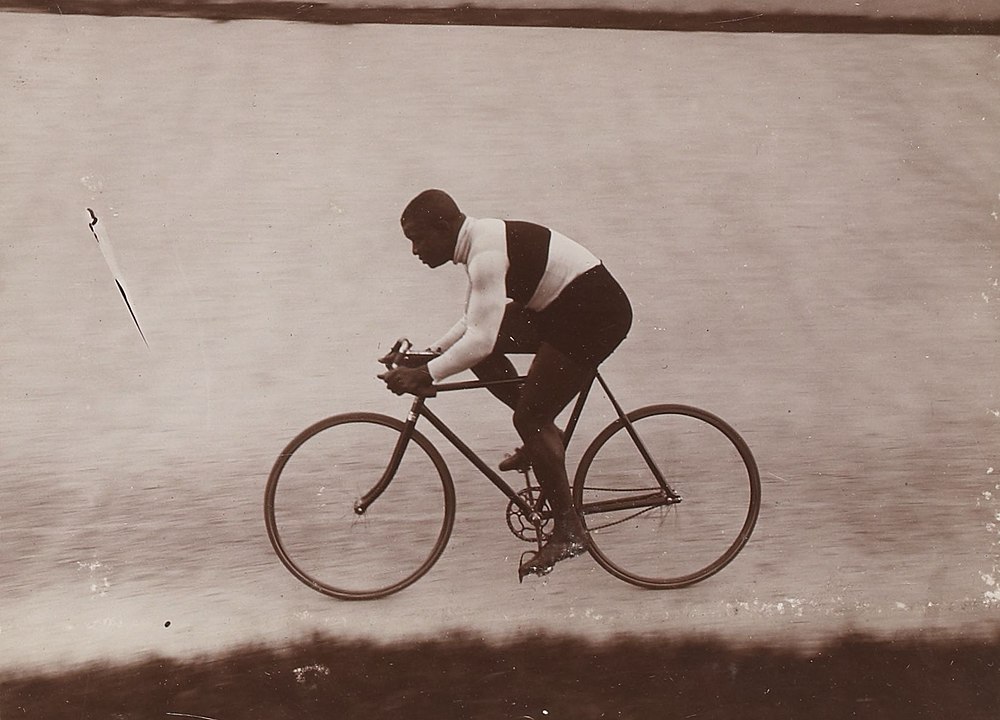There’s a new exhibit at the Indiana State Museum celebrating the life and career of a Black cycling star who deserves the recognition.
This is the story of Major Taylor, known as the “fastest cyclist in the world.”
He was originally known as Marshall Taylor, born in Indianapolis in 1878.
His dad drove a carriage for a wealthy white family, who gave Marshall Taylor his first two-wheeler.
Bikes like the ones we ride today were called “safety bicycles” then, because they were safer to ride than the pennyfarthings with the huge front wheels.
Taylor got so good at riding his bike that in his teens, he got hired to do tricks outside a bicycle shop to drum up business.
Sometimes he rode in an old military uniform, which is when he got the nickname “Major” Taylor.
But Taylor quickly moved from exhibitions to races.
He started winning amateur contests and eventually moved east to Massachusetts, where he started competing on the pro circuit.
Taylor competed in some grueling races, including one where he rode about 1,700 miles of laps around Madison Square Garden over six days.
He became a sensation, at a time when Black athletes rarely got to compete with whites, much less become stars.
One of his fans was then-New York police commissioner and future president Theodore Roosevelt.
Many white riders mocked Taylor, taunted him, bumped him, even physically attacked him.
Cycling back then was dangerous enough without being targeted by other riders.
But Taylor recognized that his cycling success was proving wrong all the people who said Black athletes couldn’t compete with whites.
Taylor would later head to Europe, where he defeated the fastest cyclists in the world and became wealthy as well as famous.
But when he came back to the United States and wrapped up his career, his fame and his wealth faded.
Cycling was no longer a huge attraction in the age of the automobile.
In recent times Taylor’s career has gotten more attention.
He was the second Black sports champion, and the first Black sports star.
Taylor not only set records and won championships, he helped pave the way for the Black sports stars of the early 20th century, from Jack Johnson and Joe Louis in boxing, to track great Jesse Owens and baseball legend Jackie Robinson.
That’s what we call a major star.
Today in 1888, actor Barry Fitzgerald was born.
He was once nominated for the Best Actor and Best Supporting Actor Academy Awards for the same role, in the 1944 movie “Going My Way.”
Fitzgerald won the Supporting Actor award, which, because of the wartime metal shortage, was made of gold-painted plaster.
Later, he was practicing his golf swing at home and accidentally knocked the head of his statuette.
They did send him a new, metal one, though there was a ten dollar replacement charge.
Major Taylor Fastest Cyclist In The World (Indiana State Museum)
Uncovering The Story Of Cyclist Major Taylor, America’s 1st Black Sports Star (Fresh Air)
Double Trouble for Foxx’s Oscar Quest? (ABC News)
Our Patreon backers are champions, all of them
Photo by Jules Beau, from Gallica Digital Library, Public Domain, via Wikicommons

